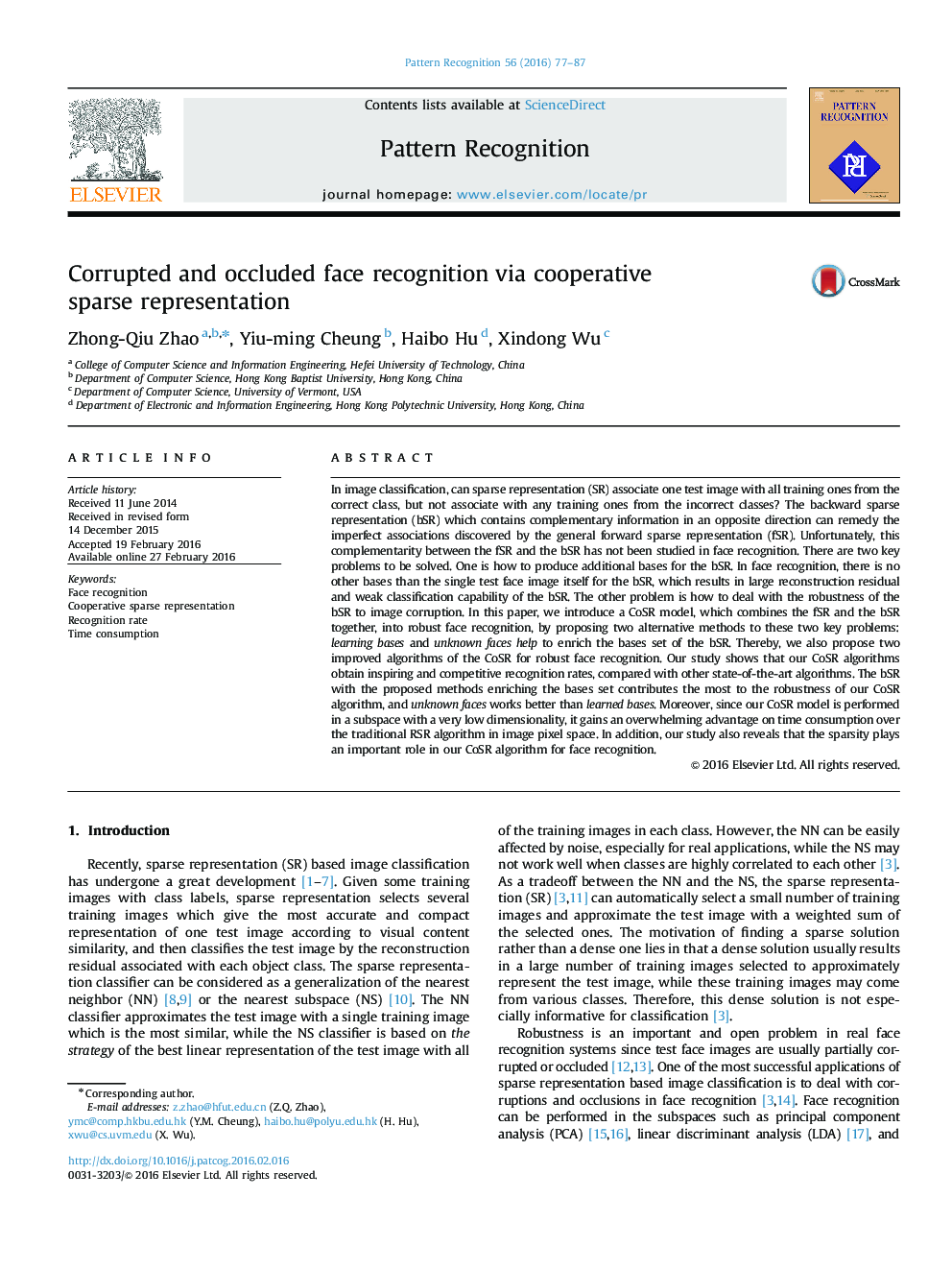| Article ID | Journal | Published Year | Pages | File Type |
|---|---|---|---|---|
| 533172 | Pattern Recognition | 2016 | 11 Pages |
•It is the first time to explore to compensate the general SR for face recognition.•We explore the complementary between fSR and bSR for face recognition.•We propose two methods robust to corruption in faces, to expand the bases of bSR.•The CoSR is introduced into face recognition, obtaining very competitive performance.
In image classification, can sparse representation (SR) associate one test image with all training ones from the correct class, but not associate with any training ones from the incorrect classes? The backward sparse representation (bSR) which contains complementary information in an opposite direction can remedy the imperfect associations discovered by the general forward sparse representation (fSR). Unfortunately, this complementarity between the fSR and the bSR has not been studied in face recognition. There are two key problems to be solved. One is how to produce additional bases for the bSR. In face recognition, there is no other bases than the single test face image itself for the bSR, which results in large reconstruction residual and weak classification capability of the bSR. The other problem is how to deal with the robustness of the bSR to image corruption. In this paper, we introduce a CoSR model, which combines the fSR and the bSR together, into robust face recognition, by proposing two alternative methods to these two key problems: learning bases and unknown faces help to enrich the bases set of the bSR. Thereby, we also propose two improved algorithms of the CoSR for robust face recognition. Our study shows that our CoSR algorithms obtain inspiring and competitive recognition rates, compared with other state-of-the-art algorithms. The bSR with the proposed methods enriching the bases set contributes the most to the robustness of our CoSR algorithm, and unknown faces works better than learned bases. Moreover, since our CoSR model is performed in a subspace with a very low dimensionality, it gains an overwhelming advantage on time consumption over the traditional RSR algorithm in image pixel space. In addition, our study also reveals that the sparsity plays an important role in our CoSR algorithm for face recognition.
